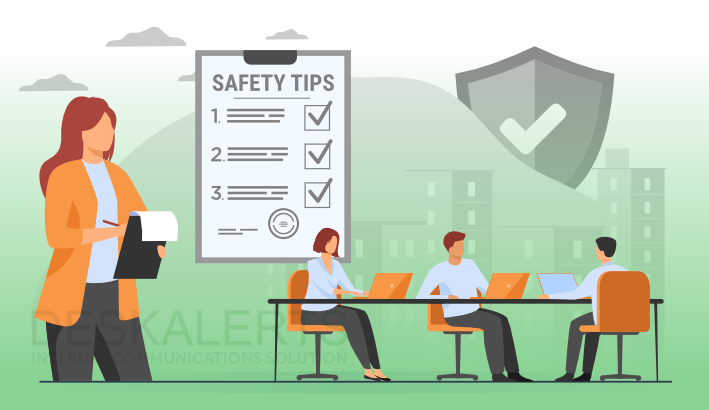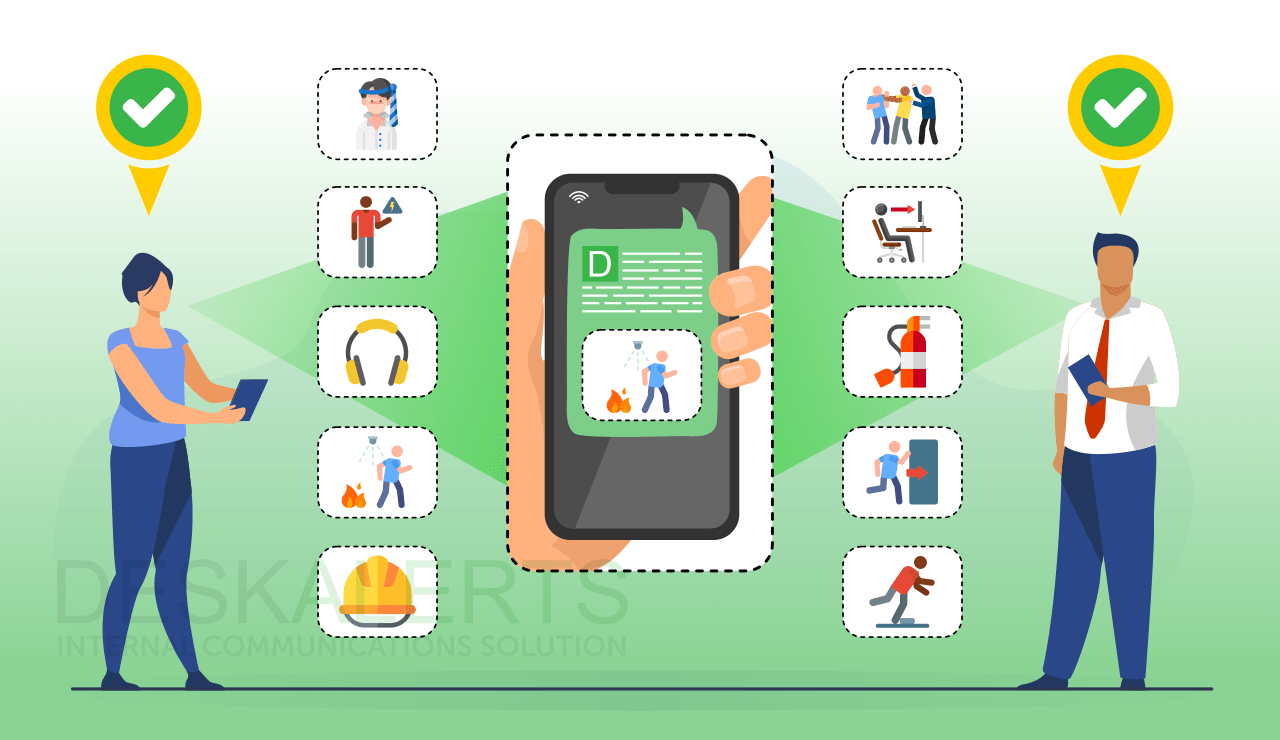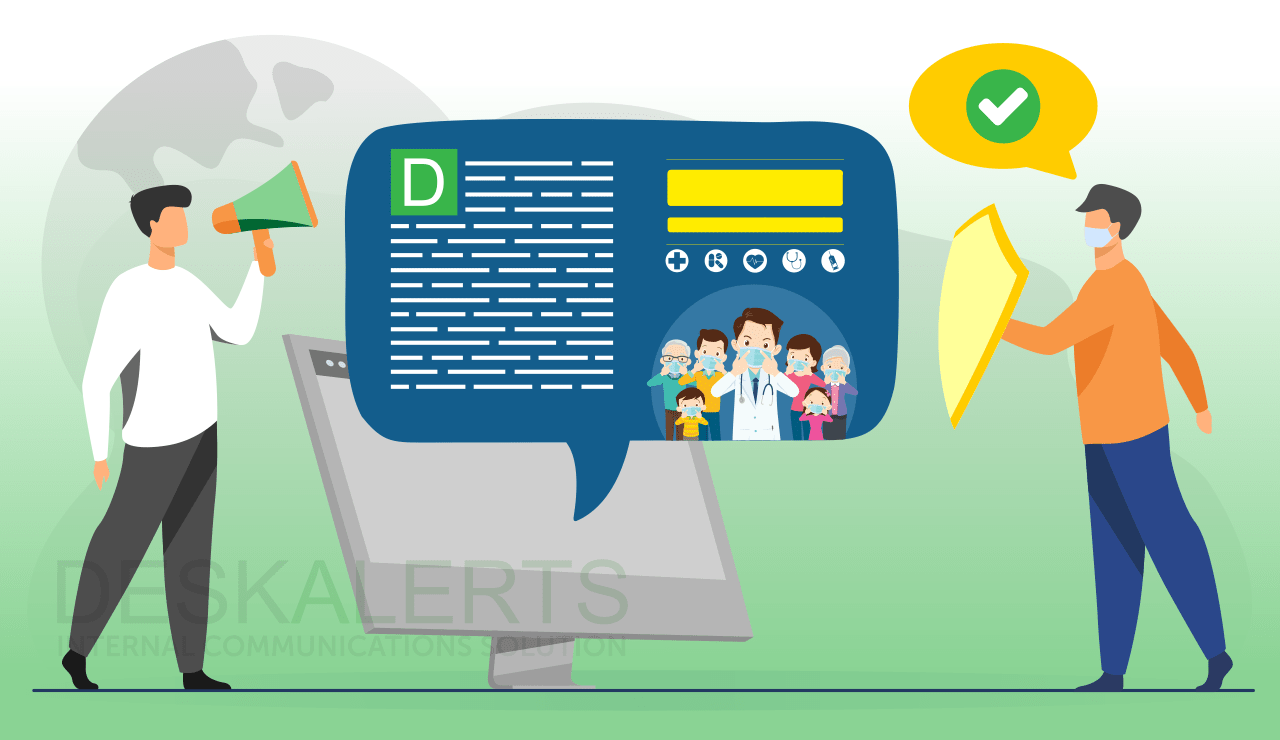
Creating a safe workplace for your employees isn’t something that just happens by osmosis. Instead, it takes a concerted effort from management to set and maintain safety standards and guide and educate employees. Workplace safety communication is a critical part of this – there’s little point in having policies and procedures if people don’t know about them and don’t know what’s expected of them.
Table of Contents
1. Why is communication important in workplace safety?
2. 10 strategies for workplace safety communications
3. Leverage Digital Platforms and Technologies to Improve Safety Communication In The Workplace
4. Communication barriers
5. How to improve employee safety communication with DeskAlerts
Why is communication important in workplace safety?
As an employer, you have legal and moral obligations to provide a safe workplace to your employees. Employees themselves, however, have a role to play in making sure they keep themselves and their colleagues safe, which is why communication is so important.
There are many negative consequences for businesses that don’t invest in employee safety communication. This can include injuries, accidents and illness, fatalities, lost workdays, high workers compensation and insurance costs, corporate reputational damage, a failure to comply with government regulations, decreased productivity, delays, lost revenue and damaged equipment.
As a business, it makes good sense to reduce the risk of accidents and injuries.
According to the USA’s National Safety Center, work injuries cost US businesses $171 billion in 2019. Source
This includes losses to wages and productivity, medical expenses, administrative costs and out-of-pocket costs that employers cannot claim on insurance.
On the other hand, the USA’s Occupational Health and Safety Administration (OSHA) has reported that companies that implement effective workplace health and safety strategies have a return of between $4 and $6 for every dollar that is spent. Source
There are many different types of safety issues that need to be addressed, and these will vary depending on the industry that you operate in. This will include:
- The safe operating of equipment
- Safety around chemicals and hazardous substances
- Safely working at heights
- Ergonomics and occupational health and safety
- Identifying and reporting hazards
- How to report incidents
- Keeping employees safe in a COVID-19 context
- Mental health and wellbeing.
Workplace safety communication isn’t just about telling people something once and expecting them to remember it. It should involve ongoing communication that is easy to understand.
It should also try to change behaviors that will, in turn, boost employee engagement levels, increase awareness of safety issues, prevent accidents and make safety a part of your company’s corporate culture.
10 strategies for workplace safety communications
These are our top tips for effective health and safety communication at work:
1. Create a communication plan
To maximize the effect of your safety communications, having a clear plan to follow is the best place to start. This will give you strategic, actionable goals rather than just sending out ad hoc information at random. Your plan should identify potential communication safety topics and how and when you will communicate them.
2. Target information to the right audience(s)
When people receive too much information, they can quickly tune out or ignore future messages from the sender. This is particularly true when people are sent irrelevant information. If you have specific health and safety messages for different groups of workers, it makes sense to only target those employees with that information.
For example, employees working with chemicals in a plant may need
specific chemical safety information, which is irrelevant to people working in a corporate office in another location.
10 messages to send to employees in case of emergency (free download)
3. Schedule shift overlaps
If you have continuous manufacturing or other operations that happen in shifts across the day, it’s crucial to ensure that there is a mechanism to share information between the different work teams, particularly if there have been any safety concerns, hazards, near misses, or accidents. A lot of companies schedule shift overlaps of anywhere from 15 to 30 minutes where employees and managers working different shifts can share important information.
4. Put safety on the meeting agenda
If your employees have regular team meetings – weekly or monthly – make safety a standing item on the meeting agenda. In my workplace, we include a health and safety tip on the agenda every fortnight to ensure people remember what they need to do to be safe and remind them of various health and well-being resources that the company offers.
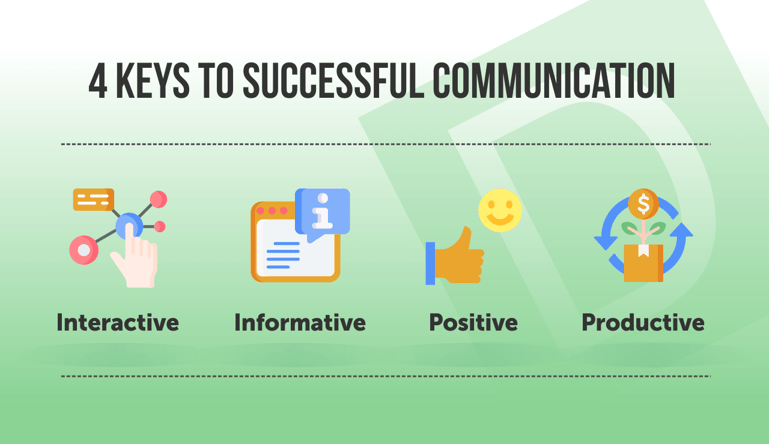
5. Use marketing strategies for your internal team
A great way to communicate health and safety messages for the workplace is to deploy the same methods and tactics that you would with an external marketing campaign but focus on employees as your target market instead. Marketing campaigns are often visual (think videos, displays, wallpapers, posters, signage and more) with catchy, easy-to-remember slogans and messaging.
6. Put safety signage where it needs to be seen
When you have potential hazards and risks or you need to remind people how to safely use equipment, you should have signage placed where it needs to be seen. This is one of the last changes you have to remind people to be safe before a potential accident takes place.
7. Training sessions count as communication
When you’re training staff, you’re actively communicating with them, so getting the communication right is important. When it comes to safety messaging, you need to explain to them clearly what the risks are to their safety and the safety of others if they fail to observe protocols or report hazards. Make sure the information you are providing in training sessions is clear and easy to understand.
8. Use a range of communications channels and tools
Communicating regularly using a range of different channels is the best practice in a workplace safety communication. It helps ensure that your messages will be seen so you can keep employees safe. People have different communication preferences and the logistics of when, where and how they work can also influence how they should receive communication which means you should never rely on a one-size-fits-all approach to your safety communications.
9. Listen to your employees
Communication is a two-way street. It’s important to have mechanisms in place to capture the feedback of your employees. This can include surveys, polls, face-to-face consultations, workshops, focus groups, and question and answer sessions. After all, your employees are the ones on the front line so will likely have views on how well safety is going. It’s also critical to have mechanisms where hazards, near misses and incidents, can be reported in real time.
10. Inject realism into your communications
Sometimes safety messaging can be high-level and abstract messaging that doesn’t really cut through with employees. Share real safety communication examples (from your own company or others in your industry) about what happens when things go wrong – case studies and incident reports can help you to illustrate this.
Leverage Digital Platforms and Technologies to Improve Safety Communication In The Workplace
1. Security Apps and Mobile Platforms
-
On-the-Go Access: Implement security apps that provide employees with instant access to critical safety information, guidelines, and emergency contacts, no matter where they are.
-
Real-Time Alerts: Use mobile platforms to send immediate notifications about safety hazards, updates, or emergency situations, ensuring quick and effective communication.
-
Interactive Features: Incorporate features like incident reporting, safety check-ins, and quick access to safety resources, all within a secure and user-friendly app.
2. Virtual Training and Webinars
-
Flexible Learning: Offer virtual safety training sessions and webinars that employees can attend from any location, making it easier for remote or off-site workers to participate.
-
Engagement Tools: Utilize interactive elements such as live Q&A sessions, polls, and virtual simulations to make safety training more engaging and effective.
-
Consistent Messaging: Ensure that all employees receive the same training content, regardless of location, which helps maintain consistent safety standards across the organization.
3. Online Safety Portals and Intranets
- Centralized Resource Hub: Create an online safety portal or intranet where employees can access all safety-related documents, policies, and updates in one place.
- Ease of Access: Ensure that the portal is easily navigable and accessible, with role-based permissions to ensure that employees can quickly find the information relevant to them.
- Regular Updates: Keep the portal up-to-date with the latest safety procedures, guidelines, and training materials, ensuring that employees always have access to current information.
4. Data Analytics and Insights
- Tracking Safety Trends: Use data analytics to monitor safety communication effectiveness, track incident reports, and identify trends or areas for improvement.
- Predictive Analysis: Leverage predictive analytics to anticipate potential safety risks based on historical data, allowing for proactive communication and mitigation efforts.
- Continuous Improvement: Analyze data from safety communications to refine strategies, improve training programs, and enhance overall workplace safety.
Communication barriers
There can be a number of obstacles that get in the way of your safety communication to employees. This can cause communication to be ineffective or to break down entirely.
Common pitfalls to beware of include:
- Sending too much information at once
- Sending information that lacks clarity
- Sending information that is confusing
- Failing to tell employees what they must do
- Individual managers who are not good at communicating important information with their teams
- Internal information silos when different teams or departments don’t share critical information
- Failing to take the concerns and priorities of employees into account
- Using the wrong communication channels and failing to reach the right people
- Not communicating quickly when there is a hazard.
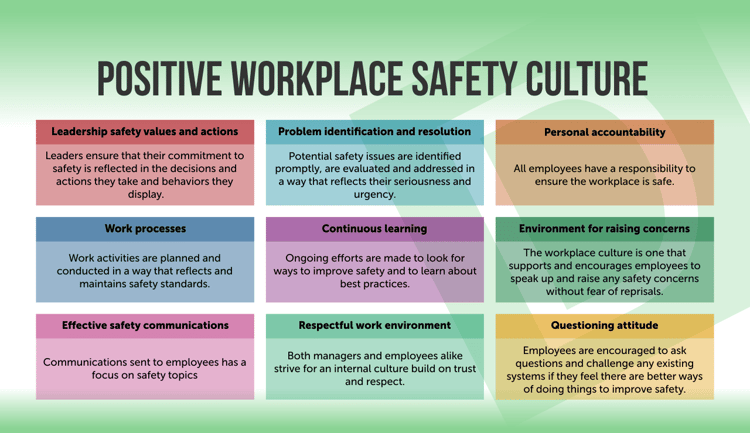
How to improve employee safety communication with DeskAlerts
DeskAlerts is an internal communication software system that can be used to reach employees quickly, no matter where they are working. It provides multiple methods of communicating health and safety information to employees. This includes:
***
Safety communication in the workplace is important to help your company prevent injuries and illnesses. If your employee safety communication could do with an overhaul, get in touch with our team of experts today to find out how you can start using DeskAlerts for effective safety communication.
FAQ
How do you communicate safety in the workplace?
Identify the safety issues that your organization may face and create a plan to send information to employees on these topics on an ongoing basis. This should outline your key messages, how you will send them, what channels you’ll use, and how often.
What is effective safety communication?
Effective safety communication is any communication that cuts through and resonates with your employees. The messages need to be informative and let your employees know the relevant facts so that they can remain safe in the workplace.
What is a good safety message?
A good safety message is one that employees can easily recall. You might include marketing and advertising campaigns tactics, such as creating a slogan or a catchphrase or using puns and humor. Avoid jargon and make your message simple and to the point.
What are the 10 rules for workplace safety?
The 10 rules for workplace safety are:
- Safety is everyone’s responsibility.
- Always dress appropriately for the work environment
- Keep work areas tidy and free from hazards.
- Follow all safety protocols and procedures.
- Promptly report any accidents, near misses, hazards or other safety issues.
- Have effective emergency management procedures in place.
- Always take care to avoid injuries.
- Don’t operate tools and machinery if you are not trained to use them.
- Take scheduled breaks.
- Do not work under the influence of drugs or alcohol.
 Caroline Duncan
Caroline Duncan







